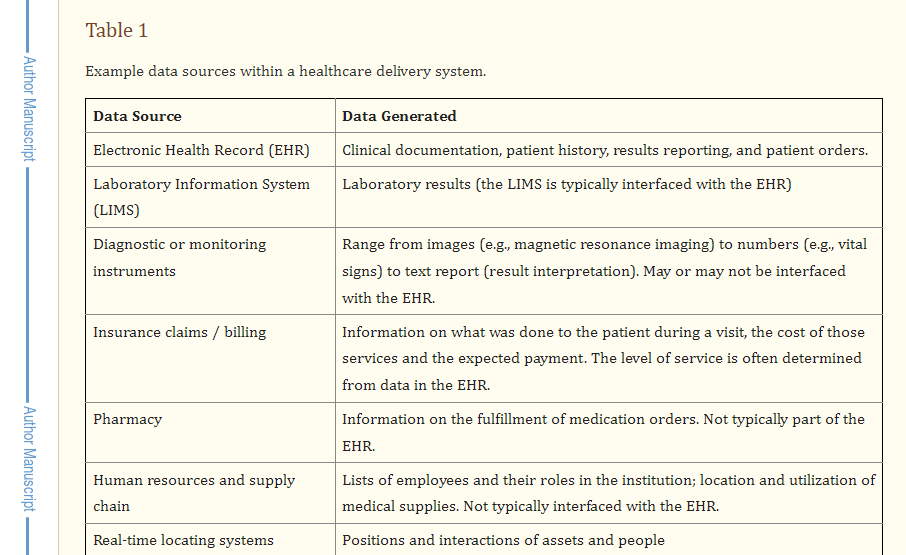Table of Contents
ToggleDue to the onset of the pandemic in 2020, the global community has lost multiple resources which in turn has set a demand for these resources in the market at the moment. The healthcare industry though has faced quite a profit amid this pandemic and the need for capable Business Analysts has grown a lot. Business Analysts play integral roles in medicine-related research works till the delivery of better patient care after any procedure. According to the Bureau of Labor Statistics report healthcare occupations will grow 15% between 2019 and 2029. Management analyst positions, including business analysts, are expected to grow 11% meanwhile.
How is Business Analytics used in Healthcare?
Let’s have a look at various verticals where Business Analysts are shinning in the healthcare industry:
1. Data Generation
Hospitals and Medical institutes are gathering data about patients to improve the entire system. They are using this information to operate major clinical and operational information systems. The usage of EHRs (Electronic Healthcare Records) is working miraculously with the beautiful blend of IoT systems and AI where transmitting data on patients from one medical institute to another is faster than blinking of eyes.
Marsolo and Spooner show a table that depicts the kind of data healthcare systems are gathering.

One of the major objectives of Business Analysts in this domain is to make sure that the data received from EHRs or any such IoT devices are updated and authentic. Based on the information, a BA conducts multiple research to enhance the entire medical system. Also, they get a clear picture of how medical institutes are utilizing the data to enhance service to the patients.
2. Research
Insights from big data can lead to breakthroughs and increase efficiency of the healthcare system and Business Analysts are making the best use of it. The ex-US President Barrack Obama launched the Cancer Moonshot program to accelerate scientific discovery in cancer, foster greater collaboration, and improve the sharing of data. Business Analysts have access to analyze data received from this program and then share it with the concerned bodies to make the healthcare facility more effective.
Data analytics significantly contribute to time and cost savings for both medical professionals and patients, facilitating more effective medication research across various diseases and demographics. For instance, researchers have developed a machine learning algorithm designed to identify and predict potential adverse effects of drugs in different genders. This algorithm conducted a comprehensive analysis of FDA reports spanning five decades, a task that would be prohibitively time-consuming for an individual researcher or even a research team.
By meticulously examining differences in biological sex, researchers can delve deeper into the underlying reasons behind drug-related adverse effects and their specific occurrence in certain individuals. Consequently, this empowers healthcare providers to make informed decisions, avoiding the prescription of drugs that are likely to pose risks to particular patients. This not only saves valuable time and resources but also minimizes patient suffering and reduces overall healthcare costs by endorsing the use of medications with a lower likelihood of causing harm.

3. Improving Patient Care
Mobile applications and wearable devices like smart watches or fitness bands have often alarmed people regarding their health status like the need for extra sleep, notification for drinking water, the need for exercise, etc. According to a report released by Mindsea, there are over 350,000 health apps now available, with about 250 new apps released every day.
There are mainly 3 parts where healthcare applications can be divided:
- Telemedicine apps provide accessible and affordable virtual care by connecting patients with certified medical professionals like doctors and nurse practitioners.
- General health/wellness apps, such as calorie counters or sleep trackers, stress-management apps that help individuals lower cortisol, and habit tracker apps like Smoke-Free, which lets ex-smokers watch how their biometrics like pulse rate and circulation improve over time after quitting.
- Health management apps, that can
- Help individuals monitor their health conditions, such as heart disease, diabetes, pregnancy, mental health, etc.
- Allow healthcare providers to share and report on a patient’s health records remotely, and
- Help keep track of medications.
The image below will give a proper understanding of how Apple’s smartwatch wearable technology is tracking health and improving wellness. The BAs in turn can receive data from these readings and often contribute to alarming people regarding their health status.
4. Detection of Diseases through Prediction
Big data in healthcare has always dealt with massive information regarding patients and Datapine has shared the interface of the data set.
The need for Business Intelligence to access this data set and infer predictions is quite huge. The utilization of big Data Analytics within the healthcare sector yields a myriad of beneficial and potentially life-saving results. In its essence, big data pertains to the extensive volume of information generated through the digital transformation of various aspects of life, which is then consolidated and subject to thorough analysis through specialized technologies. When harnessed in healthcare, this approach leverages specific health data from either a population or an individual to potentially mitigate the occurrence of epidemics, facilitate disease treatment, reduce operational costs, and more.
Here are several instances where business and data analytics are driving transformative change in healthcare by enabling disease prediction:
- Fuzzy Logix Data Analysts, through the examination of insurance and pharmacy data, have identified 742 risk factors that can predict an individual’s vulnerability to opioid abuse.
- Machine learning algorithms have been developed to identify or forecast the occurrence of heart diseases, kidney diseases, breast cancer, and Parkinson’s disease.
- A predictive analytics model unearthed the presence of VGF, a protein that serves as a protective factor against Alzheimer’s disease.
The insights derived from the analysis of extensive datasets have led to improved diagnosis and forecasting of various diseases, including diabetes mellitus, mental health disorders, and suicidal behavior.
5. Optimization of the Emergency Department
Leveraging Business Analytics within the hospital environment facilitates the enhancement of patient experiences and operational efficiency, particularly in areas traditionally characterized as chaotic and time-consuming, such as the emergency room. Through data analysis, healthcare providers gain the ability to meticulously examine extensive historical data sets, enabling them to ensure appropriate staffing levels, reduce patient wait times, and refine the triage process.
Dr. Kirk Jensen, the Chief Innovation Officer at Envision Physician Services, highlights that their data management tool assesses crucial factors of emergency room operations, including:
- Length of patient stay
- Visit Impact
- Time of day
- Day of the week
- Seasonal variations
- Variability in healthcare provider productivity

He emphasizes the fusion of science and analytics with patient care and clinician requirements, underscoring the significant opportunity for safety optimization and service enhancements. Dr. Jensen envisions the next evolutionary step, incorporating artificial intelligence and data mining to further maximize these improvements, stating, “Once we have all this data integrated into the system, the next iteration involves the incorporation of artificial intelligence and data mining to explore the extent to which optimization can be extended.”
Conclusion
As this blog shows the data, it can be easily understood that Business Analysts in the healthcare industry are contributing a lot to improve the entire medical facility as well as enhance patient wellness. Using EHRs, wearable technologies, and predictive modeling, Business Analysts are taking the best advantage of AI and Machine learning to deal with all the data efficiently. The demand for Business Analysts in the healthcare industry is booming and therefore, the medical game will improve.
